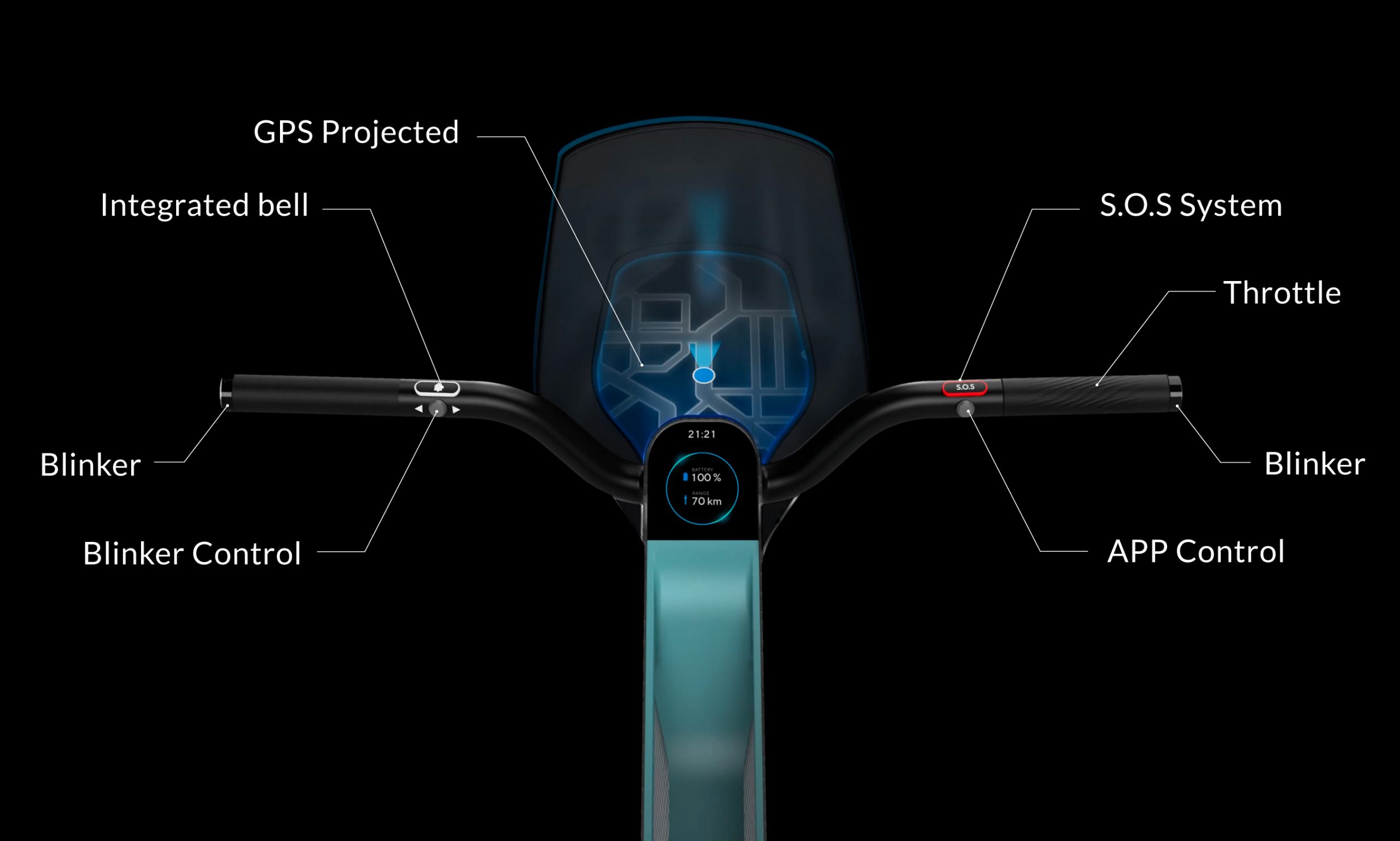Yak
A human-centric approach to food delivery and beyond
- Product Yak
- Sector Mobility
-
Services
Product Design
Trend Research
Food delivery orders in Spain have increased by 27% over the past twelve months, according to industry studies. An increasing number of delivery couriers are now using bicycles to deliver food as quickly as possible. These riders have to carry heavy boxes loaded with food on their backs, stopping to check directions on their mobile phones, exerting themselves physically as well as keeping their personal belongings in their pockets.
- Product Yak
- Sector Mobility
-
Services
Product Design
Trend Research
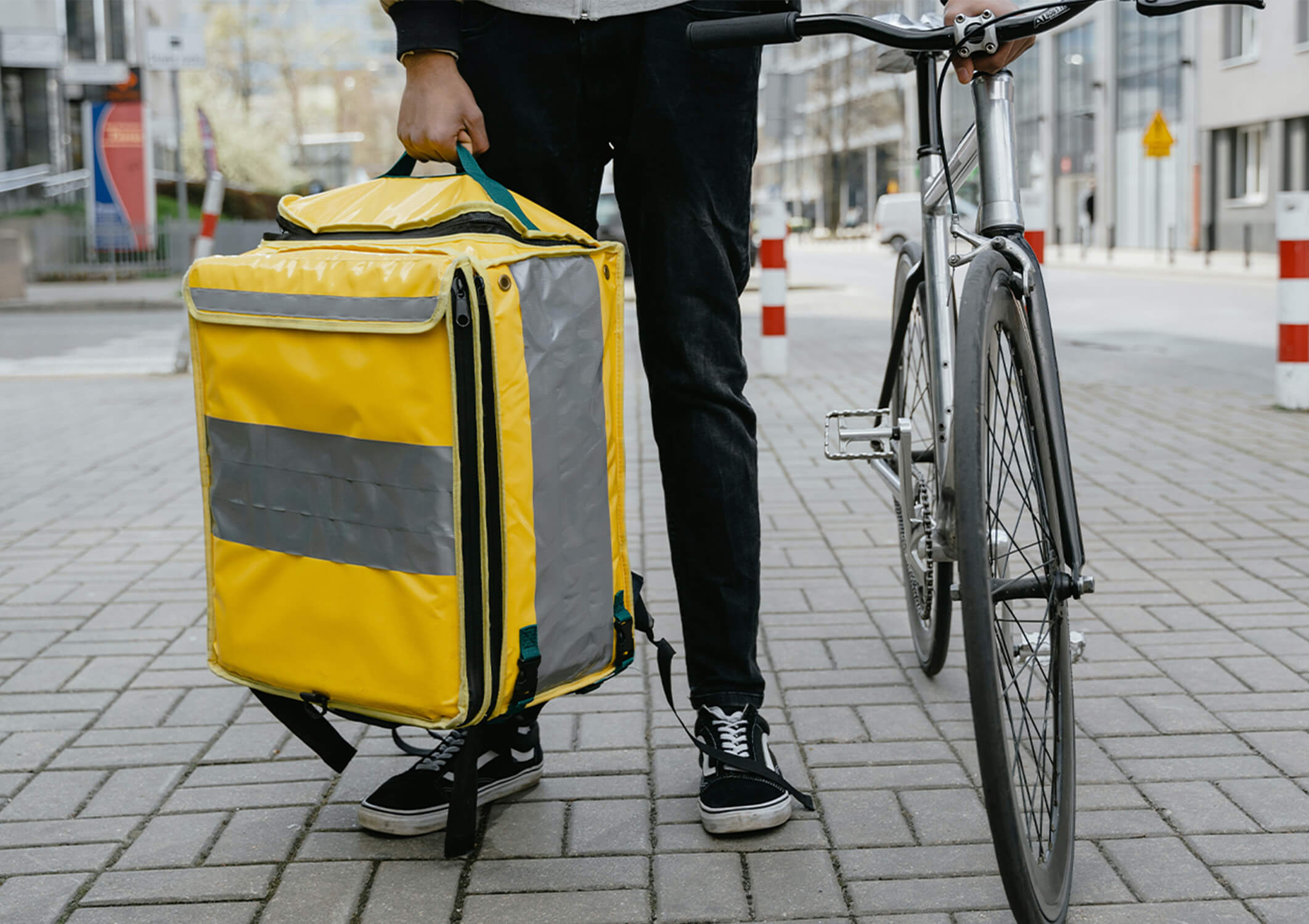
Innovation
Yak is an electric bike, designed, defined and improved down to the very last detail
For some time now, the Alegre Design team has been meticulously studying the constraints and inefficiencies of these vehicles and the solutions they provide for delivery riders, who are estimated to travel between 40 and 70 kilometres on average in a working day. On top of this are the muscular problems and the associated safety risks, whether personal or bike-related.
Yak electric bike is here to provide a solution based on design and innovation that improves the day-to-day life of food-delivery riders. It is a human-centric approach to food delivery and beyond.
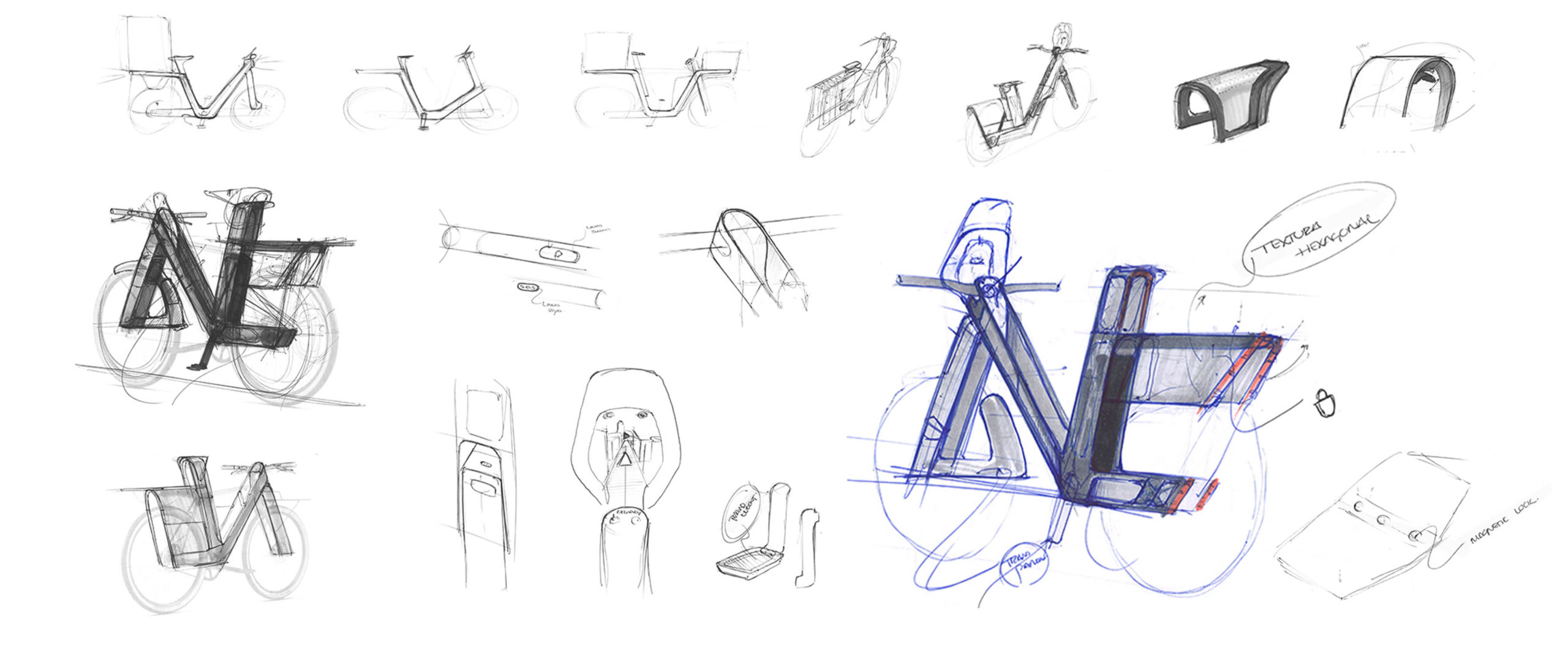
Value
In the foldable platform, a magnetic rear support holds the box with the food
From an ergonomic point of view, the rear part incorporates a support which is equipped with an advanced magnetic system to hold the box containing the food in place while in transit. This means the delivery rider does not have to carry the bag and can move freely while riding. Once the bike is disconnected from the rider, so is the attachment system, enabling the load to be easily removed.
When the bike is stationary or in storage, the platform folds down, taking up less space.
Riding is further enhanced by an interactive map that is projected onto the Yak’s front windscreen. This navigation system avoids unnecessary stops and distractions, allowing riders to react more quickly. Handlebar-mounted controls allow the user to control the interface without taking their eyes off the road.
The bike itself is built using a new system that uses carbon laminates instead of metal tubes. These laminates allow internal storage spaces to be created within the structure.
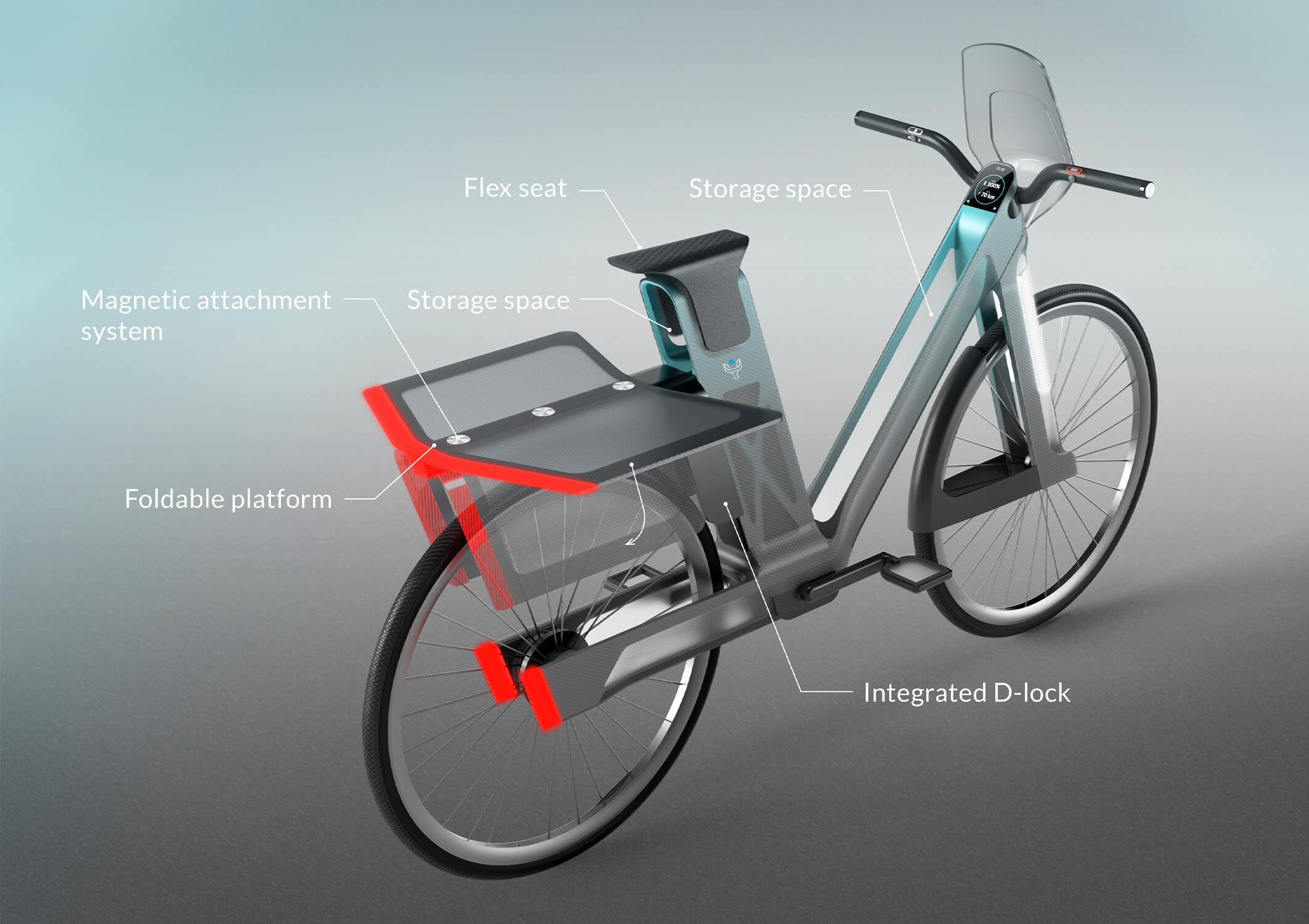
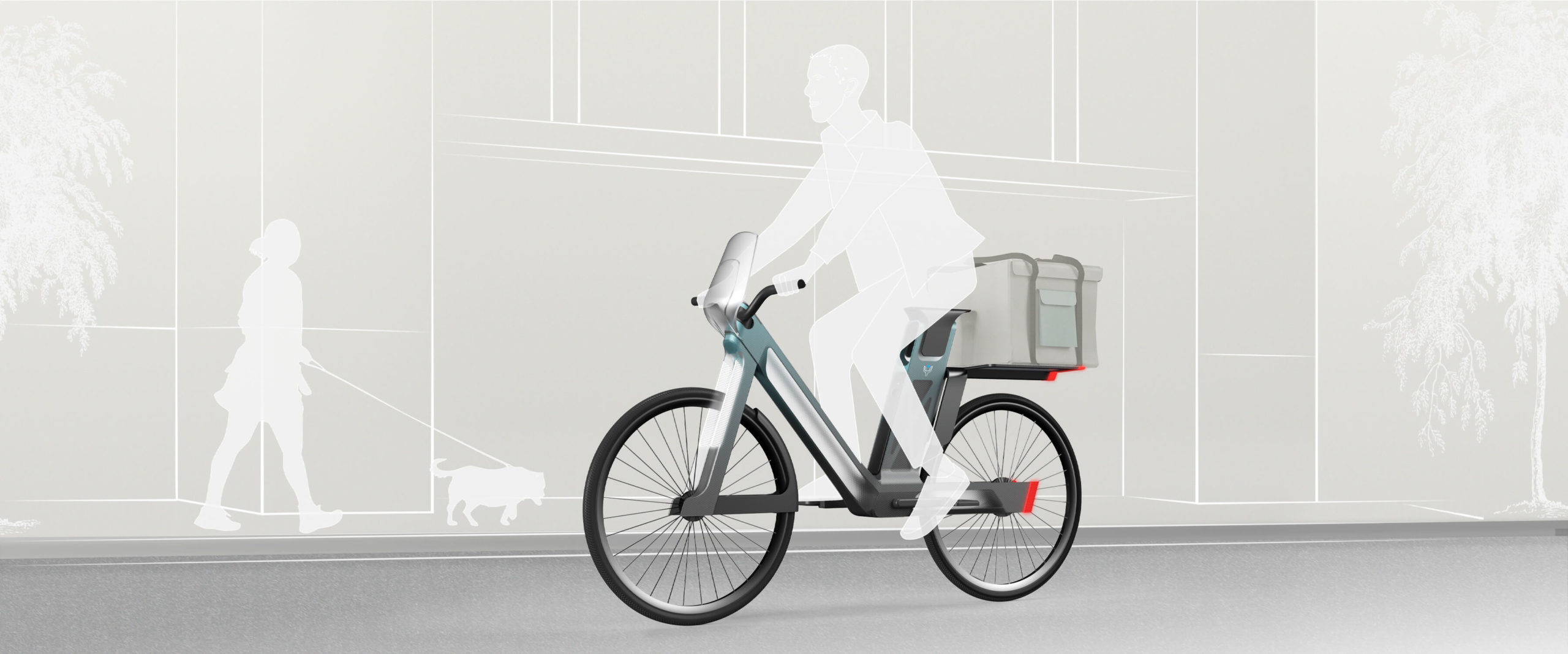
An electric bike improved down to the very last detail
The saddle base is designed to house the battery, a key element that improves speed and manoeuvrability of the bike, whilst reducing the effort required to ride it. The battery can be detached and removed, meaning that it can be recharged without having to move the whole bike.
Thanks to this carbon laminate design, a space is created at the base of the handlebars to store all the delivery rider’s personal belongings. It can even hold a small water bottle for hydration breaks.
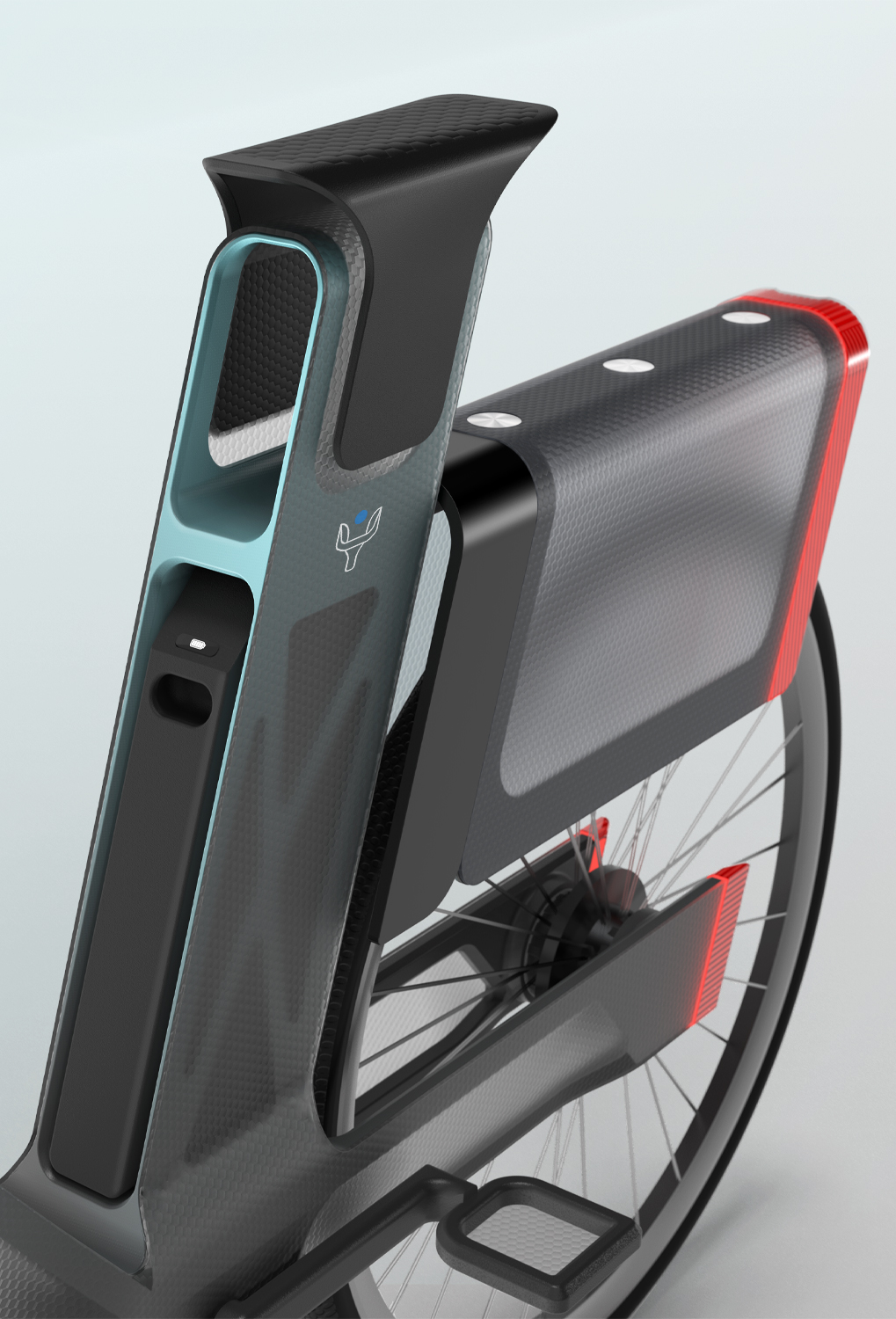
People
User and vehicle safety has been enhanced, the delivery driver is at the heart of the design
Thanks to this carbon laminates design, a space is created at the base of the handlebars to store all the delivery rider’s personal belongings. It can even hold a small water bottle for hydration breaks.
User and vehicle safety is another element that has been technically developed from a design point of view. The lights and indicators are integrated into the front, rear and on the handlebars alike, the latter also having a built-in SOS system.
This system, once activated, sends the location of the delivery rider and their vehicle to the emergency services. In the event of a robbery, the police can track the location of the bicycle at all times.
The rear bar lifts up and can be attached to any bracket which can also be used as a padlock. If it is unlocked using blunt force, it will trigger a deterrent alarm, reducing the likelihood of the theft of this vehicle that is of the utmost importance in the day-to-day life of delivery drivers.
Yak electric bike puts the rider at the heart of the design of the vehicle, always considering their physical, functional and professional needs, so that they can work under the best possible conditions in terms of ergonomics, efficiency and well-being.
